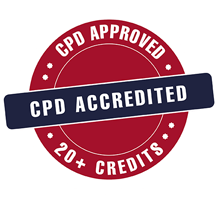Title : Effective anaerobic digestion of waste activated sludge using the combined ultrasonic and alkaline pretreatment
Abstract:
Waste activated sludge (WAS) as a by-product from sewage treatment plant should be treated to manage the environmental problems such as water pollution and human health risks. Anaerobic digestion (AD) is one of the treatment methods that is biologically effective technology to produce renewable energy while treating organic waste including WAS. Bioconversion to mainly methane gas from organic waste by AD is an attractive as carbon-neutral technology. However, the AD of WAS should be improved because of low biodegradability.
This study investigated that the simultaneous combination effect with low energy consumption was performed for using ultrasonic-alkaline pretreatment in order to enhance the biodegradability of WAS and thus the biomethane production through AD. Alkaline pretreatment with low NaOH dosage (50% w/w, 2 mL/L sludge) was performed for 2 h reaction time and ultrasonic pretreatment with low specific energy (8571 kJ/kg total solid (TS), 20W, 20kHz) was performed for 30 min reaction time. Combination pretreatment was simultaneously accomplished to same NaOH dosage (2mL/L sludge) and ultrasonic specific energy (8571 kJ/kg TS, 20W, 20kHz) for 30 min reaction time. The biochemical methane potential test of the pretreated sludge was experimented during 28 days in order to evaluate the effect of three pretreatment methods.
Alkaline pretreatment was the most solubilization efficiency of 10.4% than 1.9% of ultrasonic pretreatment and 6.4% of combination pretreatment compared to unpretreated sludge. Soluble chemical oxygen demand (SCOD) of alkaline, ultrasonic, and combine methods were 2.0 g/L, 5.0 g/L, and 7.5 g/L, respectively. The methane production of combined pretreatment was 158% higher than unpretreated test, otherwise the results were about 53% of alkaline pretreatment and 20% of ultrasonic pretreatment. These results indicated that simultaneously combined pretreatment with short time could be more effective to biomethane production from WAS compared to each pretreatment methods even though lower solubilization efficiency (6.4%) than alkaline pretreatment (10.4%). It might be that non-biodegradable COD was more released in alkaline pretreatment during longer reaction time which could affect to decrease the bioconversion efficiency of AD. Additionally, low energy input (20W, 8571 kJ/kg TS) of ultrasonic pretreatment without chemical dosage seemed to be slight effect on the hydrolysis of sludge. Therefore, the result suggests that AD with simultaneously combined pretreatment is potential to manage WAS in sustainable and carbon-neutral manners.
Audience Takeaway:
- Simultaneous pretreatment with low energy ultrasonic and low dosage alkaline is effective the enhancement of AD from WAS.
- Who targeting the solubilization of WAS, alkaline pretreatment is more attractive option.
- In order to improve the efficiency of ultrasonic pretreatment, ultrasonic power is important




